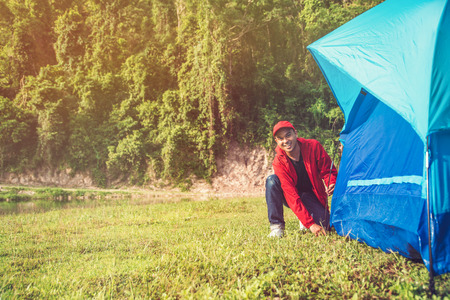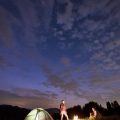Introduction to Leave No Trace in Car Camping
When we think about camping, many of us picture pitching a tent deep in the wilderness, far from civilization. But for a lot of outdoor lovers in the U.S., car camping—setting up camp near your vehicle at designated campgrounds—is a favorite way to enjoy nature. While car camping is more accessible and comfortable than backcountry trips, its just as important to care for the environment. This is where the Leave No Trace (LNT) principles come in.
What Is Leave No Trace?
Leave No Trace is a set of seven guidelines designed to help all outdoor enthusiasts minimize their impact on natural areas. The LNT principles were developed by the Leave No Trace Center for Outdoor Ethics and have become the gold standard for responsible recreation across America. Following these principles helps keep our parks, forests, and campgrounds healthy for everyone—now and in the future.
Why Does LNT Matter for Car Campers?
It’s easy to assume that established campgrounds don’t need as much care as remote wilderness. However, front country (developed) settings often see heavy use, with hundreds or thousands of people visiting each season. This means small actions—like leaving trash behind or feeding wildlife—can add up quickly and damage the area for everyone. Practicing Leave No Trace ensures that even busy campsites stay clean, safe, and beautiful.
Front Country vs Backcountry: What’s Different?
The LNT principles apply everywhere, but how you practice them can change depending on where you are. Here’s a quick look at some differences:
| LNT Principle | Backcountry Wilderness | Front Country (Car Camping) |
|---|---|---|
| Plan Ahead & Prepare | Pack all gear; prepare for no amenities | Check campground rules; pack for comfort and convenience |
| Dispose of Waste Properly | Pack out all waste; dig catholes if needed | Use provided trash bins and restrooms |
| Respect Wildlife | Avoid animal encounters; store food securely | Never feed wildlife; secure trash cans in campsites |
| Be Considerate of Others | Keep noise low; share trails respectfully | Follow quiet hours; respect neighbors space and privacy |
The Bottom Line for Car Campers
No matter where you camp—deep in the woods or right next to your SUV—practicing Leave No Trace makes sure we protect the places we love. In the next sections, we’ll break down each principle with simple tips tailored for car campers in America’s front country.
2. Planning Ahead in the Front Country
When it comes to car camping in the front country, a little planning goes a long way—especially if you want to follow Leave No Trace (LNT) principles. The more you prepare, the easier it is to minimize your impact and have an awesome experience outdoors. Here are some practical tips for prepping your next car camping adventure with LNT in mind.
Route Planning: Know Before You Go
Start by figuring out where you want to camp. Use apps or websites like Recreation.gov or AllTrails to find established campgrounds and check road conditions. Avoid making new paths or driving off-road, as this can damage habitats. If youre headed somewhere new, download maps ahead of time in case cell service is spotty.
Key Route Planning Tips
| Tip | Why It Matters |
|---|---|
| Stick to established roads and trails | Prevents erosion and protects wildlife areas |
| Check weather and fire restrictions | Keeps you safe and prepared for changing conditions |
| Download offline maps | You won’t get lost if you lose signal |
Campsite Reservations: Book Smart, Camp Happy
Front country sites—especially national parks or popular state parks—often require reservations. Booking ahead ensures you get a legit spot and helps rangers manage visitor numbers. Never set up camp in undesignated areas; it can harm local ecosystems and might get you ticketed.
Reservation Checklist:
- Reserve campsites through official channels (like park websites)
- Confirm rules about group size, pets, and quiet hours
- If first-come, first-served, have a backup plan just in case
Gear Choices: Pack Light, Pack Right
Your gear choices matter for LNT! Bring reusable items whenever possible—think water bottles, utensils, and food containers—to cut down on single-use trash. Choose gear that’s appropriate for the weather so you don’t need to improvise with natural resources. And remember to pack out everything you bring in.
| Essential Gear | LNT Benefit |
|---|---|
| Reusable water bottles & mugs | Reduces waste from disposables |
| Tarp or ground cloth | Protects campsite ground cover from damage |
| Bags for trash & recycling | Makes packing out easy and keeps sites clean |
| Portable stove instead of campfire (when possible) | Lowers risk of wildfire & reduces impact on natural wood sources |
Understanding Local Regulations: Play by the Rules
Laws and rules protect both nature and visitors. Always check for site-specific guidelines—these might include fire bans, wildlife warnings, parking limits, or rules about collecting firewood. Ignoring these not only hurts the environment but could also spoil your trip with fines or evacuations.
- Read posted signs at the campground entrance and trailheads.
- If you’re unsure about a rule, ask a ranger—they’re happy to help!
- Respect quiet hours and neighbor space—front country camping means sharing with others.
The key to successful car camping with Leave No Trace is thinking ahead. With some simple prep work, youll enjoy your adventure while keeping the outdoors beautiful for everyone.

3. Minimizing Impact at Developed Campgrounds
Why Reducing Your Footprint Matters
Even though car camping happens in developed campgrounds, it’s important to follow Leave No Trace principles here too. Large numbers of campers can still put a strain on the environment, wildlife, and other visitors’ experiences. By being mindful, you help keep these places beautiful and accessible for everyone.
Smart Strategies for Low-Impact Camping
Choosing the Right Campsite
Always use designated sites when available. These spots are designed to handle traffic and reduce damage to natural areas. Setting up in undesignated areas can harm plants and compact soil.
| Campsite Feature | Best Practice |
|---|---|
| Tent Pads | Set up your tent only on the provided pad to avoid trampling grass or plants. |
| Parking Areas | Park only in marked spots; don’t drive or park on vegetation. |
| Picnic Tables/Fire Rings | Keep activities centered around these features—they’re placed for minimal environmental impact. |
Respecting Site Boundaries
Stick to your assigned campsite and keep all gear, cooking, and relaxing within those borders. Don’t spread out into neighboring sites or natural areas, even if they look empty—this helps protect sensitive habitats and respects fellow campers’ space.
Cautious Gear Use and Setup
- Avoid digging trenches or altering the site: Developed campgrounds are already set up for drainage—there’s no need to modify them.
- Use established hooks and posts for hanging items: Don’t tie ropes around trees or branches that could get damaged.
- Keep camp furniture light: Use portable chairs or tables rather than moving logs or rocks, which can disturb microhabitats.
- Store food securely: Always use bear boxes or lockers if provided to prevent attracting wildlife to the area.
Quick Tips Table: Reducing Your Impact
| Action | LNT-Friendly Alternative |
|---|---|
| Laying down tarps outside boundaries | Keep all ground covers within your site’s footprint |
| Hanging hammocks from trees without protection | Use tree-friendly straps or skip hammocks if not allowed |
| Piling firewood against trees or structures | Stack wood neatly in designated spots only |
| Crowding multiple tents onto one site | If needed, reserve another site instead of overloading one spot |
The key is simple: treat every campground as if it’s your backyard. The less you disturb the area, the better it will be for you, wildlife, and future campers.
4. Proper Waste Disposal at Front Country Sites
Why Waste Disposal Matters
When youre car camping in the front country, proper waste disposal isn’t just about keeping your site tidy—it’s about protecting wildlife, preventing pollution, and respecting fellow campers. Adapting Leave No Trace principles means making sure all your trash and waste end up where they belong.
Using Campground Facilities
Most established campgrounds in the U.S. offer basic amenities for waste disposal. Here’s how to make the most of them:
| Facility | What To Do |
|---|---|
| Trash Bins & Dumpsters | Always bag your trash and put it directly in designated bins. Don’t leave bags outside—animals will get into them. |
| Recycling Containers | Sort recyclables like cans, bottles, and paper as instructed on local signage. Never contaminate recycling with food or non-recyclables. |
| Restrooms & Vault Toilets | Use provided restrooms for human waste whenever possible. Don’t dump gray water or anything else into these facilities. |
Packing Out Waste: When Facilities Aren’t Enough
If you’re camping at a primitive site or if campground dumpsters are full, you may need to pack out your waste. Here’s how:
- Trash: Bring heavy-duty trash bags from home. Double-bag if necessary to prevent leaks or smells.
- Human Waste: Use portable toilet systems (“wag bags”) or travel toilets when there are no restroom options. Always follow manufacturer instructions and dispose of sealed bags in proper landfill trash bins—not recycling!
- Pet Waste: Clean up after pets using doggy bags and pack those out too.
Recycling and Local Rules
Campsites across America have different recycling rules, so check the campground kiosk or website before you arrive. Common guidelines include:
- No glass allowed in some parks—bring cans instead.
- No food-contaminated items (like greasy pizza boxes) in recycling.
- Toss bottle caps and lids separately if requested.
- If in doubt, ask a ranger or host!
Quick Reference: Front Country Waste Disposal Tips
| Do This | Avoid This |
|---|---|
| Bag all trash and place it in designated bins daily. | Leaving food scraps or wrappers around your campsite. |
| Use campground restrooms whenever possible. | Burying waste near campsites or water sources. |
| Read and follow local recycling signs carefully. | Tossing non-recyclable items into recycling containers. |
| Pack out all trash if bins are unavailable or overflowing. | Burning trash in fire pits—it releases toxins and leaves behind debris. |
By being mindful of waste disposal, car campers help keep front country sites clean, healthy, and welcoming for everyone who visits next.
5. Respecting Wildlife and Other Campers
Responsible Wildlife Observation
One of the joys of car camping in the U.S. is spotting wildlife, but its important to do so in a way that protects both animals and campers. Use binoculars or cameras with a zoom lens to enjoy watching animals from a distance—never approach, feed, or try to touch them. Feeding wildlife, even unintentionally, can cause them to become dependent on humans and disrupt natural behaviors.
Wildlife Viewing Tips
| Tip | Why It Matters |
|---|---|
| Keep your distance (at least 25 yards from most animals; 100 yards from bears and wolves) | Reduces stress for wildlife and keeps you safe |
| Stay quiet and calm | Avoid startling or scaring animals away from their habitat |
| Never feed wild animals | Keeps animals healthy and prevents dangerous encounters |
Proper Food Storage
American campgrounds often attract curious critters like raccoons, squirrels, and even bears. Use provided food lockers, bear-proof containers, or keep all food and scented items locked in your vehicle. Don’t leave snacks out on picnic tables—even if you’re just stepping away for a few minutes.
Food Storage Guidelines at Car Campsites
| Storage Method | When to Use It | Best For |
|---|---|---|
| Bare-proof locker (if available) | Always at night or when away from camp | Bears, large mammals |
| Sealed containers inside vehicle | If no locker is provided, always store food in your car overnight or when not in use | Small mammals, general wildlife |
| No food left unattended outdoors | No matter the time of day—always pack it up! | All animals, even birds and insects |
Considerate Behavior Toward Fellow Campers
Being thoughtful about noise levels, campsite boundaries, and shared facilities is an important part of American outdoor etiquette. Many families and groups come to public lands for peace and relaxation—respect their space by keeping music low, using “inside voices,” especially early in the morning or late at night, and never walking through someone else’s campsite.
Top Ways to Be a Good Neighbor at the Campground:
- Observe quiet hours: Most U.S. campgrounds set “quiet hours” (often 10pm-6am). Stick to these times for everyone’s enjoyment.
- Use designated paths: Walk on roads or established trails instead of cutting through other campsites.
- Campsite lights: Turn off string lights or lanterns before bedtime to avoid disturbing others’ sleep.
- Pets: Keep dogs leashed and clean up after them at all times.
- Packing out trash: Always leave your site cleaner than you found it so everyone can enjoy a pristine environment.
6. Managing Campfires Safely and Responsibly
When car camping in the front country, gathering around a campfire is part of the classic American outdoor experience. However, with greater access and more people, it’s important to make sure your campfire use follows Leave No Trace principles. Here’s how you can enjoy a cozy fire while keeping safety and environmental care in mind.
Best Practices for Campfires in Car-Accessible Areas
| Do | Don’t |
|---|---|
| Use existing fire rings or pits if available | Build new fire rings or dig into the ground |
| Keep fires small and manageable | Burn large logs or create bonfires |
| Bring your own firewood (buy local) | Collect wood from the area (can damage habitats) |
| Have water and a shovel nearby at all times | Leave a fire unattended, even for a minute |
| Drown, stir, and feel ashes before leaving site | Bury coals or leave hot embers behind |
Alternatives to Traditional Campfires
If there are fire bans, or you want a low-impact option, consider these alternatives:
- Camp stoves: Efficient for cooking and allowed during most fire restrictions.
- LED lanterns or string lights: Create ambiance without smoke or risk.
- No-trace “campfire”: Share stories around a lantern instead of a real fire.
Respecting Fire Bans and Local Regulations
Fire danger can change quickly in many parts of the U.S., especially in the summer. Always check for posted fire bans or restrictions before lighting any flame. If fires are prohibited, follow the rules—these exist to prevent wildfires and protect communities as well as nature.
Quick Tips for Responsible Campfire Use:
- Never burn trash, plastics, or food scraps—pack out all garbage.
- Avoid building fires on windy days.
- Keep your fire contained within designated areas only.
- Before you leave, make absolutely sure your fire is dead out—cold to the touch.
7. Leaving Your Campsite Better Than You Found It
One of the best ways car campers can practice Leave No Trace in front country areas is to always leave your campsite looking better than when you arrived. This simple habit not only preserves the outdoors for others but also sets a great example for everyone who enjoys nature.
Pick Up Trash—Yours and Others’
Before heading out, take a few minutes to scan your entire campsite for any trash or leftover food scraps. Don’t just pick up your own garbage—if you see someone else’s litter, toss it in your trash bag too. Every little bit helps keep our parks and campgrounds clean and inviting.
Simple Steps for Cleaning Up
| What to Look For | How to Dispose |
|---|---|
| Food wrappers, bottle caps, cans | Put in trash or recycling bins |
| Tiny items (twist ties, bread tags) | Check around tables and fire pits, then pack out |
| Microtrash (cigarette butts, small plastics) | Use a small bag or container to collect them |
| Natural debris moved by campers (rocks, sticks) | Return to their original spots if possible |
Restore the Area
If you moved rocks, logs, or other natural features to set up your site or build a fire ring, try to return them to where they belong before you leave. Brush away footprints from sandy or muddy spots, and rake out matted grass so the area looks undisturbed. These little actions make a big difference in keeping campgrounds healthy and beautiful.
Encourage Others to Join In
The Leave No Trace ethic grows stronger when everyone pitches in. If you’re camping with friends or family, make cleanup a group activity. Talk about why leaving things better matters—not just for us now, but for everyone who’ll visit later. Be a friendly role model; sometimes all it takes is one person cleaning up for others to join in.
Ways to Foster Leave No Trace Culture:
- Share tips on social media about how you clean up your site
- Pack extra trash bags and offer them to neighbors if needed
- Praise kids and fellow campers when they help tidy up
- Join campground volunteer cleanup days if available
By making these habits part of every trip, car campers can help ensure that America’s favorite outdoor places stay wild, welcoming, and beautiful for everyone.


